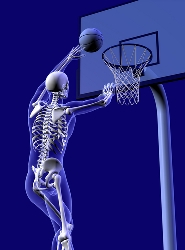Hip Arthritis and Hip Replacement

If you are suffering from pain in your hips, you may be dealing with a disease affecting millions of Americans – hip arthritis. The hip is a ball and socket joint with both surfaces normally covered by a smooth, white, glistening layer of cartilage. When you’re suffering with arthritis, this cartilage begins to wear out and break down – similar to what happens to automobile tires after 50,000 miles.
Depending on how serious your condition is, you may need to consider some hip replacement procedures. At AOSMI, our NJ orthopedic surgeons are skillful and compassionate, pursuing all possible treatments, including minimally invasive surgery.
Early signs of hip arthritis include:
- Morning stiffness
- Aching after weight bearing activities such as walking or playing sports
As the cartilage is worn off further, your body makes bone spurs causing the joint to lose mobility, and become stiff and painful. You may experience difficulty rotating your hips as required for a golf swing or putting on shoes and socks. In severe cases, nearly all of the cartilage is gone and the bone ends rub together. You may experience:
- Constant pain that limits even daily activities such as getting up from a chair and walking around the house.
- Weakness from not exercising your hip muscles requiring the use of a cane or walker to get around.
Once your arthritis symptoms interfere with your lifestyle and limit daily activities, even with taking medication, we will most likely recommend minimally invasive hip replacement surgery to improve your mobility and reduce pain.
Non-Operative Treatments and Common Surgical Procedures for Hip Arthritis
 The NJ orthopedic surgeons at AOSMI offer a coordinated program for diagnosis, evaluation, non-operative treatment and education. Hip arthritis can be managed with non-operative treatments including rehabilitative care and ancillary treatments. With our onsite physical therapy center, a hip specialist will provide a closely coordinated program of medical care and rehabilitation aimed at getting you back in action.
The NJ orthopedic surgeons at AOSMI offer a coordinated program for diagnosis, evaluation, non-operative treatment and education. Hip arthritis can be managed with non-operative treatments including rehabilitative care and ancillary treatments. With our onsite physical therapy center, a hip specialist will provide a closely coordinated program of medical care and rehabilitation aimed at getting you back in action.
Traditionally, hip replacement procedures involved large incisions, significant blood loss requiring transfusions, and extended hospitalization stays and extensive rehabilitation. Patients did well with surgery, but they experienced significant pain and limitation of activity for the first three months after surgery. Well, times have changed. With the advent of mini-incision or minimally invasive surgery combined with new techniques in pain management and anesthesia, our hip replacement surgeons can actually provide a more pleasant surgical experience.
Materials for Hip Replacement Surgery

- Implants: Porous titanium or trabecular metal allows bone to grow into the implant; once bone bonds with the titanium surface it does not loosen. This cementless technology avoids bone cement which tends to fragment and crack over time.
- Bearing surfaces: Ceramic on UHMWPE is highly durable and expected to last a lifetime. Another option is ceramic on ceramic which is the hardest surface available and generates the least wear.
Navigation (Computer assistance) for Hip Replacement Surgery
- Navigation has been proven to increase surgical accuracy and precision in making bone cuts and placing components. It is expected to yield longer lasting hip replacements with less need for revision or repeat surgery.
Advantages of Minimally Invasive Hip Replacement Surgery
Minimally invasive hip replacement surgery at AOSMI offers all of the advantages of traditional procedures while providing for faster recovery and minimizing complications. The posterior mini-incision technique causes less muscle damage than other techniques and provides good visualization of the femur and socket. Because of this, there are no additional risks with this procedure. Advantages of our NJ orthopedic surgeons minimally invasive hip replacement surgery include:
- Direct Anterior Approach and Mini Posterior Approach offered
- Smaller incision approximately 4” versus 10” for non-obese patients, more cosmetic
- Preservation of the piriformis tendon and Capsular Noose capsular repair – less muscle cut and minimizes dislocation risk
- Recovery from hip replacement surgery is much easier with shorter hospital stays (two days vs. one week)
- Shorter recovery from hip replacement surgery and return to usual activities in four weeks
- Less blood loss and need for transfusions
- Lower rates of complications
- Less pain and less need for pain medications
If you’re interested in more information about hip injuries and diseases, stop in and speak with our hip replacement surgeons today.







